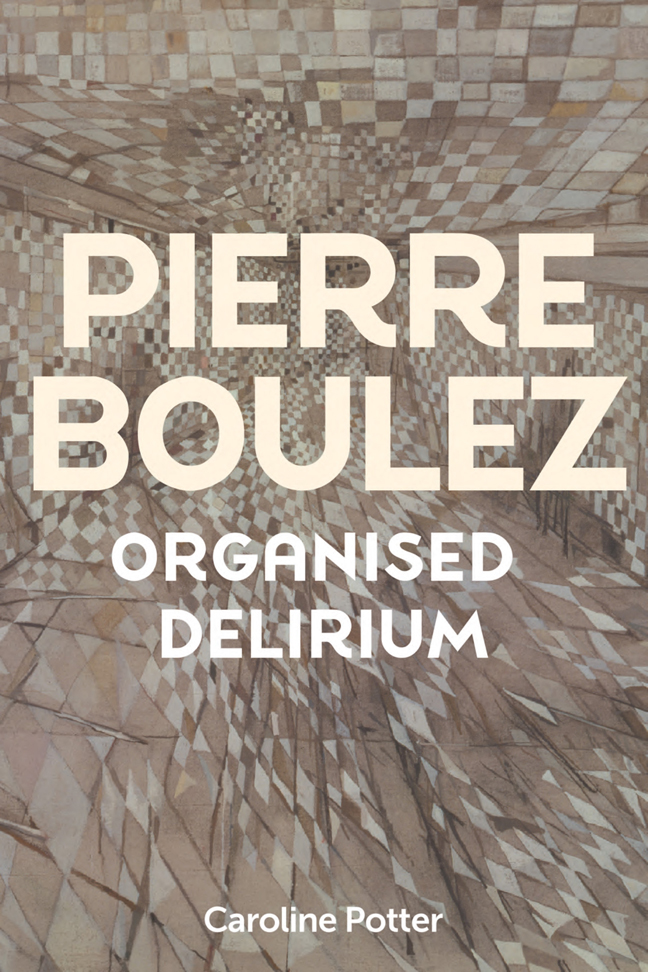Book contents
- Frontmatter
- Contents
- List of illustrations
- Acknowledgements
- Introduction: Organised Delirium
- 1 Surrealism in the 1930s and 40s
- 2 ‘A flayed lion’: Boulez as student
- 3 Serialism and surrealism: Boulez's instrumental music 1946–8
- 4 Fureur et mystère: the first versions of Boulez's René Char settings
- 5 The charm of numbers: continuing threads in Boulez's later music
- Select bibliography
- Index
2 - ‘A flayed lion’: Boulez as student
Published online by Cambridge University Press: 21 February 2024
- Frontmatter
- Contents
- List of illustrations
- Acknowledgements
- Introduction: Organised Delirium
- 1 Surrealism in the 1930s and 40s
- 2 ‘A flayed lion’: Boulez as student
- 3 Serialism and surrealism: Boulez's instrumental music 1946–8
- 4 Fureur et mystère: the first versions of Boulez's René Char settings
- 5 The charm of numbers: continuing threads in Boulez's later music
- Select bibliography
- Index
Summary
Boulez Was Brought Up in Montbrison, a small town near Lyon, where he received his first musical education. There was no public concert life in the town, but he was part of a church choir – he described being in a choir as ‘a very good educational experience’ – and in 1991 he recalled that there were local chamber music groups that rehearsed weekly. While studying a mathematics-based curriculum at secondary school in Lyon, he took private lessons in piano and harmony with Lionel de Pachmann, son of the celebrated pianist Vladimir de Pachmann. These lessons were based on the standard repertoire and classical musical language. Opportunities for Boulez to hear contemporary music while he was at school were very limited; in discussion with François Meïmoun he remembered hearing the violinist Jacques Thibaud playing Szymanowski's Mythes (1915) and being ‘especially struck’ by the first piece, ‘La Fontaine d’Aréthuse’, because ‘its sonic universe cut across that of modern music of the time, when Honegger was the acme of modernity’.
Honegger was the most prominent contemporary composer in France in the early 1940s, and in Lyon, Boulez remembered hearing André Cluytens, then musical director of the Opéra National de Lyon, conduct works by him. Boulez particularly recalled Honegger's La Danse des morts, which seemed to him ‘fabulous, completely different from the [musical] universe with which I was familiar’. La Danse des morts (1938), an oratorio inspired by Holbein's Dance of Death, features a melange of material including French revolutionary songs, the Dies irae plainsong and a preachy text by Paul Claudel which draws on Biblical extracts. Its punchy opening, graphically depicting fire and brimstone with multiple trombones and percussion instruments, is more reminiscent of Varèse than of most of Honegger's work, and its scoring for narrator, soloists, chorus and orchestra shows Honegger and Claudel grappling with a ‘total theatre’ concept, as in their earlier Jeanne d’Arc au bûcher (1935).
Only a few years later, Boulez would himself be performing work by Honegger and by Claudel in his role as musical director of the Renaud– Barrault theatre company. Boulez did not experiment with composition until 1942, when he was 17 years old: one of his first surviving attempts was a setting of Baudelaire, Recueillement, which he may not have known at the time had been set by Debussy fifty years earlier.
- Type
- Chapter
- Information
- Pierre Boulez , pp. 59 - 96Publisher: Boydell & BrewerPrint publication year: 2024

